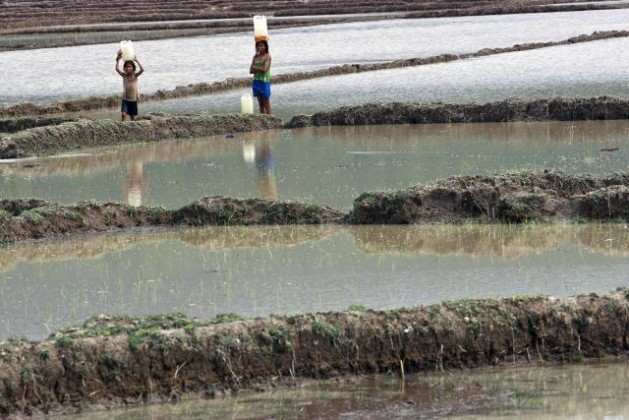HAMILTON, Canada, Feb 25 2015 (IPS) – We have entered a watershed year, a moment critical for humanity.
As we reflect on the successes and failures of the Millennium Development Goals, we look toward the post-2015 Sustainable Development Goals to redress imbalances perpetuated through unsustainable economic growth and to help achieve key universally-shared ambitions, including stable political systems, greater wealth and better health for all.

Little girls in Timor-Leste cross a rice field after heavy rains carrying water in plastic containers. Credit: UN Photo/Martine Perret
Threat of a global water crisis is often mischaracterised as a lack of water to meet humanity’s diverse needs. It is actually a crisis of not enough water where we want it, when we want it, of sufficient quality to meet needs. Read more


